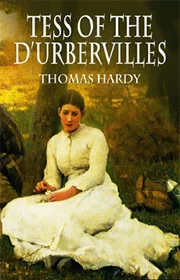
“Tess of D’Urbervilles” by Thomas Hardy is a tragic tale set in 19th-century England. Tess Durbeyfield, a pure and innocent peasant girl, learns of her family’s noble ancestry. Her life takes a dark turn when she encounters Alec d’Urberville, a wealthy and manipulative man. Despite Tess’s virtuous nature, she faces a series of unfortunate events, leading to tragic consequences. The novel explores themes of fate, social class, and the impact of societal expectations on individuals. Tess’s journey is marked by love, betrayal, and the harsh realities of Victorian society, making “Tess of D’Urbervilles” a timeless classic with enduring themes.
Read Tess of D’Urbervilles Flipbook:
Listen to Tess of D’Urbervilles Audiobook:
Author: Thomas Hardy
Setting:
Plot Summary:
Themes:
Characters:
Symbolism:
Tragic Element:
Reception:
Legacy:
Controversy:
Serial Publication:
Stonehenge Scene:
Realistic Settings:
The Influence of Hardy’s Life:
Cinematic Adaptations:
Symbolic Family Name:
Feminist Interpretation:
Social Critique:
Literary Legacy: